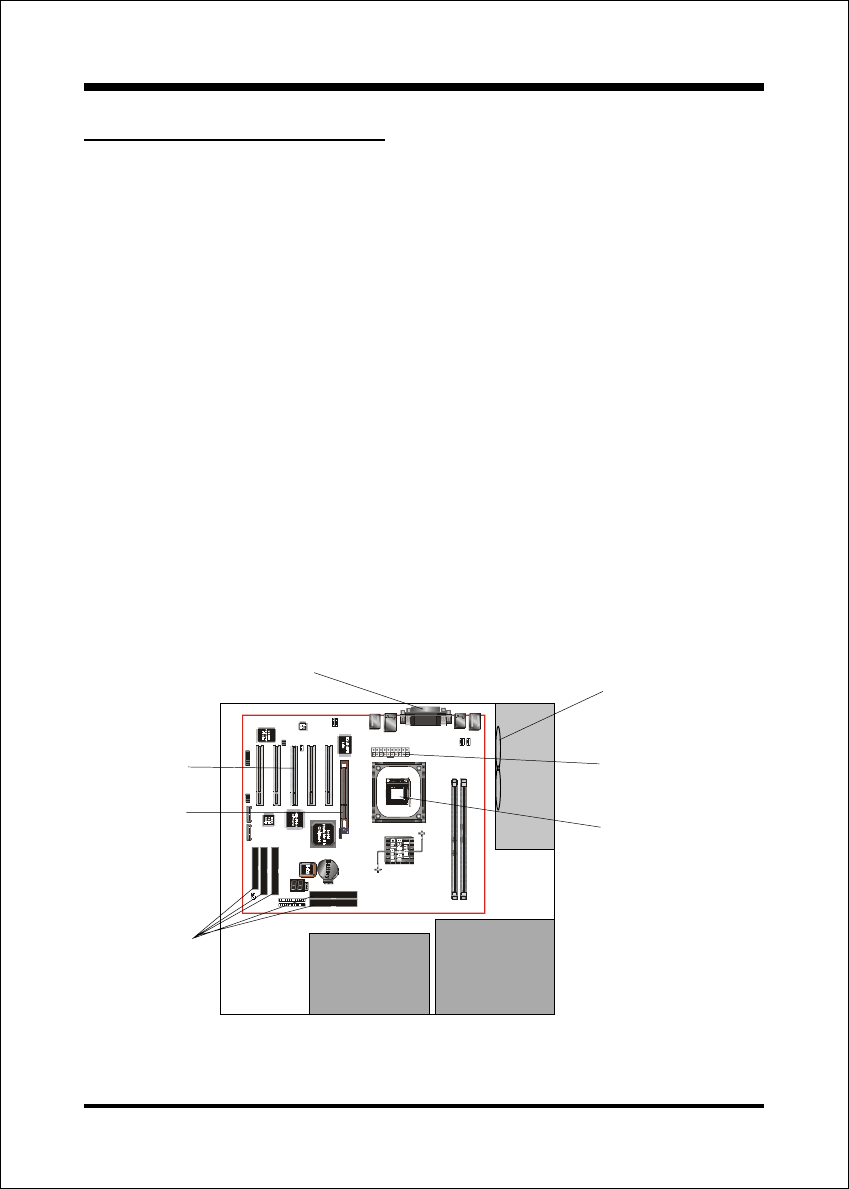User`s manual

Introduction
Page 1-8
PCI slots
Expandable I/O
Figure 2: Summary of ATX chassis features
CPU
Single chassis
fan for system
ATX
Power
Supply
ATX power connector
Floppy/IDE
connectors
AGP slot
Mainboard Form-Factor
The board is designed with an ATX form factor. The ATX form factor is essen-
tially a Baby-AT baseboard rotated 90 degrees within the chassis enclosure and a
new mounting configuration for the power supply. With these changes the proces-
sor is relocated away from the expansion slots, allowing them to hold full length
add-in cards. The ATX form factor provides a double-height aperture at the rear of
the chassis which can be used to host a wide range of onboard I/O devices,
enabling PC manufacturers to add new I/O features (for example, TV input, TV
output, joystick, modem, and LAN ). Other advantages include:
Smaller form factor promotes an overall smaller system size.
I/O shield does not need to be retooled in an ATX 2.01 form factor or later.
This mainboard should be used in an ATX 2.01 (or later) compliant case.
A smaller power supply can be used.
High integration on mainboard reduces the system cost.
3 1/2-inch
Bay
5 1/4-inch
Bay










